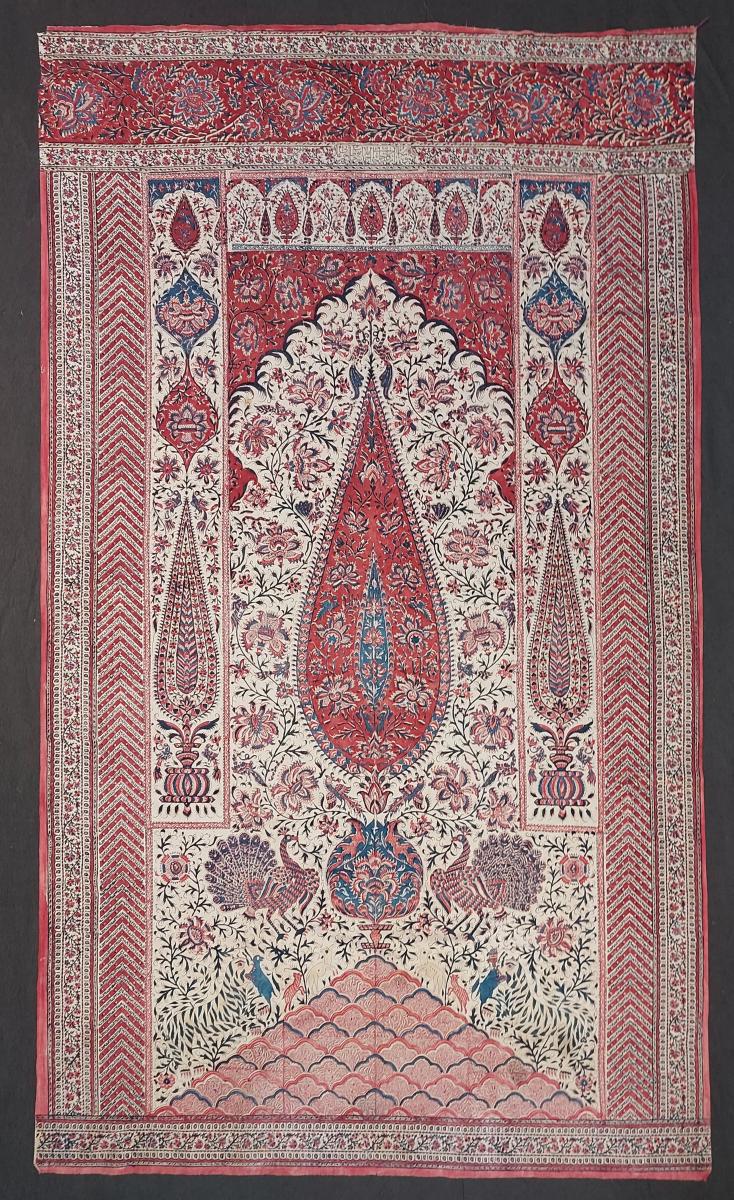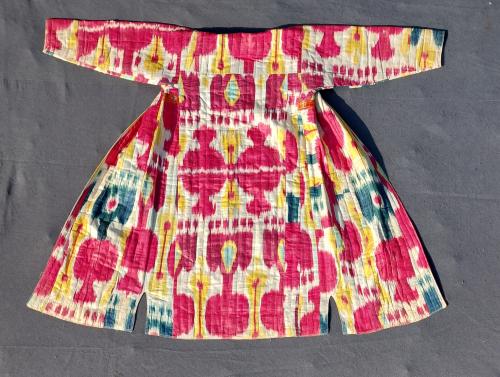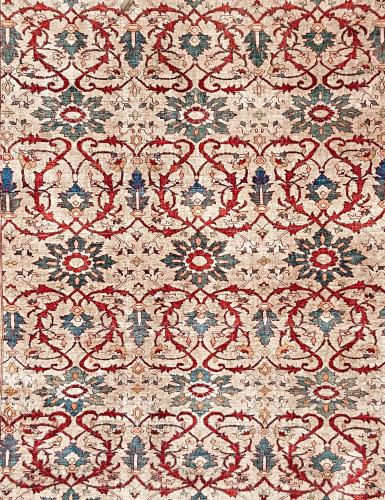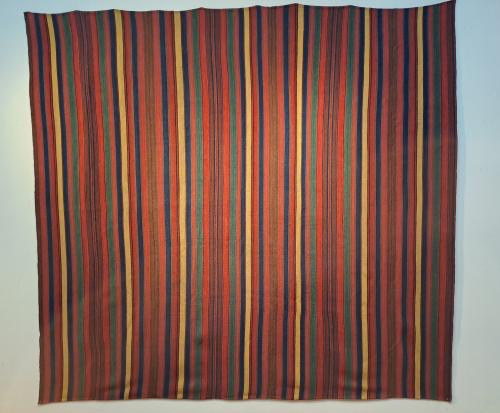

Price on application
This object is eligible for a Certificate of BADA Provenance
The BADA Standard
- Since 1918, BADA has been the leading association for the antiques and fine art trade
- Members are elected for their knowledge, integrity and quality of stock
- Our clients are protected by BADA’s code of conduct
- Our dealers’ membership is reviewed and renewed annually
- Bada.org is a non-profit site: clients deal directly with members and they pay no hidden fees
Indo-Persian Kalamkari dating to the early part of the 19th century and originating from the Coromandel Coast, a centre of production for this type of textile.
The term "kalamkari" is derived from the Persian "kalam", which means pen and points to the technique employed in creating these beautiful textiles: the art of drawing onto cloth, in this case a very fine cotton. The design has been created by a mixture of drawing and block printing.
Interestingly, it is a combination of a "tree of life design" and a "vase design". The triangular mountain of highly stylized rocks at the foot of the image is usually the root of the tree of life. In this case, however, it is a substantial vase from which two vines emerge at either side which is sitting at the top of the mountain. The two vines undulating on either side of the central element are reminiscent of the intertwined trees in a classic tree of life composition.
Cypress trees are an important feature in this textile. They emanate in concentric form from the vase, and they are a dominant pattern in the side panels, also emanating from a vase. The flowers decorating the field on a white ground and the red corners around the Mihrab are very elegantly drawn.
Two magnificent peacocks flank the main vase on either side. The symmetry is repeated with two tigers hunting a deer on either side of the mountain. These animals are frequently found motifs on Indian Kalamkari.
Palampores, or bed hangings, in a very similar format were often made for the European market. They are, however, usually larger than the textile in hand. It is likely that this Kalamkari was intended for trade inside Asia, more specifically for the Persian market, which is supported by the not entirely legible writing in the cartouche at the top. For a brief discussion of size, see also https://www.metmuseum.org/art/collection/search/75909 .
The Kalamkari is in excellent condition, with one small patch in the field and very fresh colours.
Dimensions
188 x 112 cmStock number
7275The BADA Standard
- Since 1918, BADA has been the leading association for the antiques and fine art trade
- Members are elected for their knowledge, integrity and quality of stock
- Our clients are protected by BADA’s code of conduct
- Our dealers’ membership is reviewed and renewed annually
- Bada.org is a non-profit site: clients deal directly with members and they pay no hidden fees




